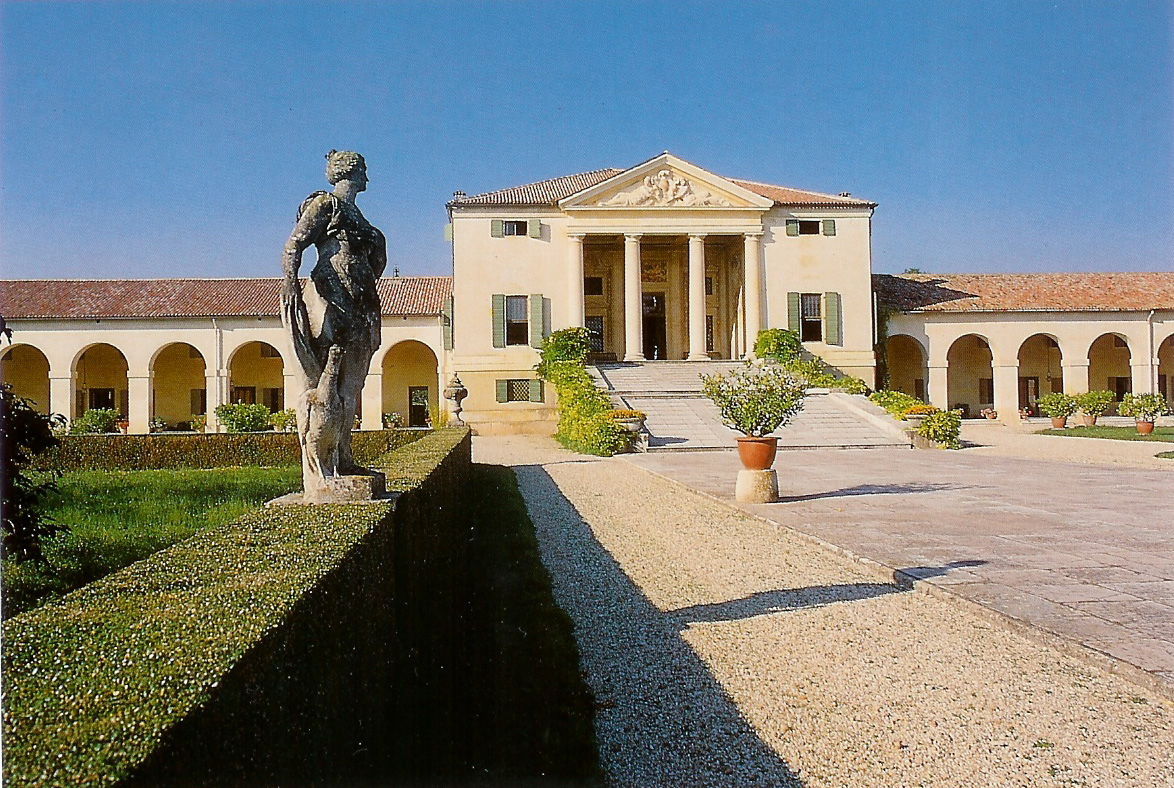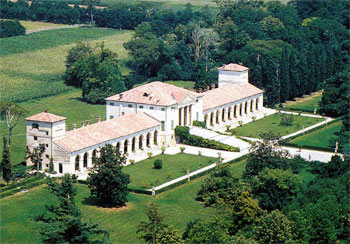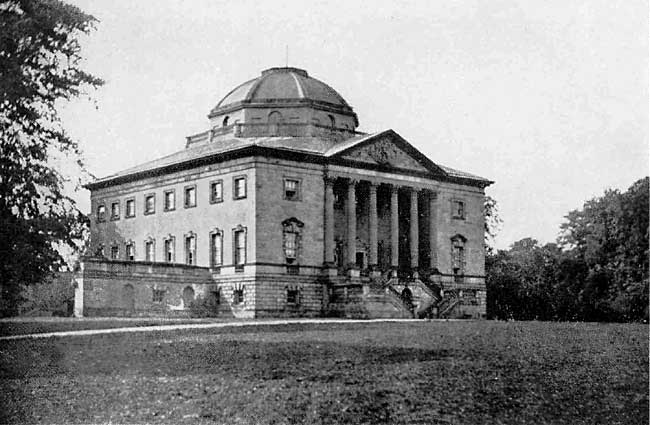Don't panic---this isn't going to be one of those six degrees posts. Not in the mood. Actually no reason for this post at all except that something I read sent me on a pleasant ten minute architectural journey through google. So, Just a few pretty pictures, and hey, if there are a few connections made along the way, well, I just can't help myself. Here is how a wandering mind spends ten minutes in its travels.
While reading Robert Becker's biography of Nancy Lancaster earlier this week, I was struck, by Mrs. Lancaster's description of her first sight of Eydon Hall, soon to be the home of her Aunt and Uncle Phyllis and Robert Brand. She was reminded, as ever she was, of her native Virginia, and in particular, of Bremo, the Cocke family estate in Fluvanna County. She considered it the most beautiful house in Virginia. I first saw a photo of the house when I was 12 or so, in Richard Pratt's Treasury of Early American Houses. An arrow went through my heart, and has remained lodged there every since. Never had I seen such purity, and such a perfect balance between elegance and neglect---my New England childhood, much as did Mrs. Lancaster's Virginia childhood, left me with a permanent taste for architectural and decorative purity with a dollop of faded on the side. Unfortunately, it did not leave me with either Mrs. Lancaster's talent for putting together a room, nor her talent for rich husbands---but, that's another story. On with the photographic ramble.


 |
| Bremo |
Bremo, still privately owned by the Cocke family, whose ancestor built it with input from Thomas Jefferson, is quite possibly the house in America that I've never seen that I'd most like to, very close to my idea of perfection. I love the fences in the arcades, to keep animals from wandering in, bringing this Virginian example indeed close to the Italian idea of the farm-villa. (For a lovely set of color photos of Bremo, follow this link)
 |
| This photo of the hall at Bremo, as it would have appeared in Lancaster's youth, makes it easy to understand Lancaster's later affection for a certain sort of English country house |
Naturally, this caused me to think about the real villas by Palladio that had inspired this beautiful house---and Thomas Jefferson---particularly the Villa Emo:
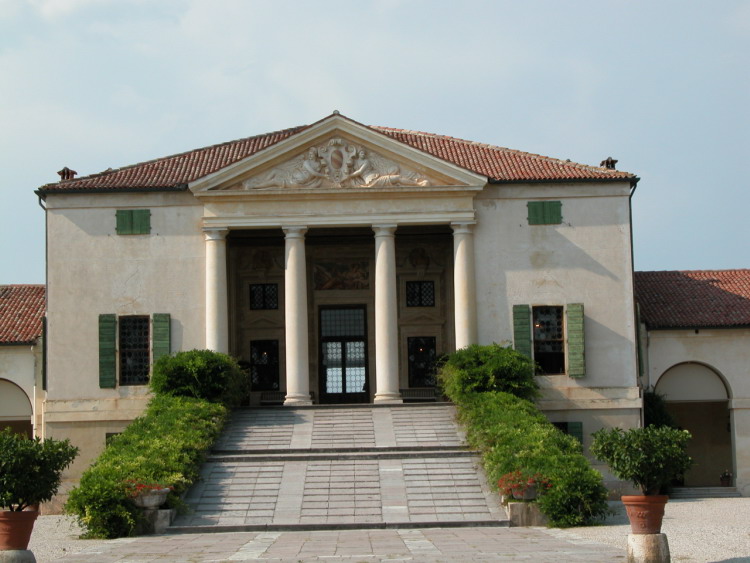 |
| Villa Emo |
One cannot look at Bremo without thinking of Jefferson at Monticello
 |
Monticello
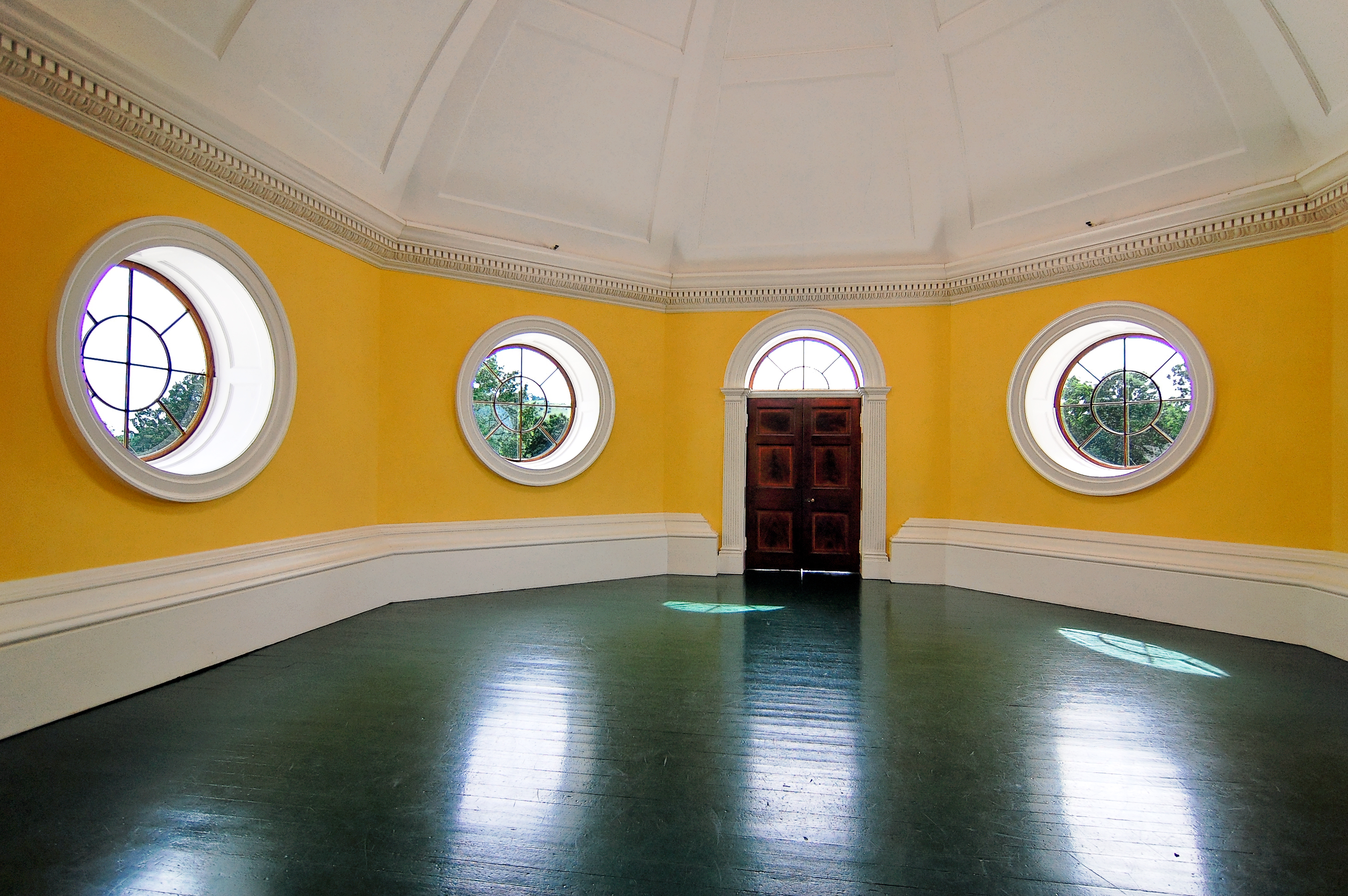 |
| The rotunda, or 'dome room' at Monticello (a terrific article about this room can be found by clicking HERE |
|
I was temporarily and pleasantly diverted from my path as I remembered Little Ipswich, Delano and Aldrich's Grecian-detailed riff on the Monticello theme for decorator Ruby Ross Wood at Syosset Long Island, a house that frankly makes me a little weak at the knees. Though I know I said no six degrees, it is worth remembering that Delano and Aldrich were Nancy Lancaster's architects when she renovated her family home, Mirador, in Virginia
 |
| Little Ipswich |
|
|
|
|
|
I was also distracted as I contemplated the wonderful entrance rotunda at Little Ipswich
But I snapped back as I thought about that Englishman, Lord Burlington, who so famously embraced Palladianism for the design of his own domed villa at Chiswick in the early 18th century.
 |
| Chiswick House |
|
 |
| Cross section of rotunda at Chiswick |
Palladian though Chiswick and Monticello may be, they owe great design debt to the sublime Villa Rocca Pisana designed by Scammozi The beauty of the rotunda at Rocca Pisana strikes me speechless.
 |
| Villa Rocca Pisana. Speechless. |
Another English house, Nuthall Temple designed by Wright of Nottingham (no relation to Wright of Chicago), also took inspiration from La Rocca Pisana, and its rotunda too strikes me speechless, although in a very different way. Busy, busy, busy.
 |
| Nuthall Temple and Rotunda |
Naturally, the next stop was Villa Capra, 'La Rotonda', the house by Palladio that inspired Villa Rocca Pisana
 |
| Villa Rotonda. Speechless again. |
Villa Rotonda led me back to England, to Mereworth Castle in Kent, that most English take on La Rotonda, designed by Colin Campbell.
 |
| Mereworth Castle |
Mereworth Castle was owned for a time by Michael Tree, who inherited it from his step-grandfather, Lord Beatty. Tree's mother, Nancy Lancaster, kindly redecorated it for him. I couldn't achieve a color photo of the rotunda, where Lancaster brought Italy to England with color, a rich salmon terra cotta.
And with that, we've come full Rotonda.
























